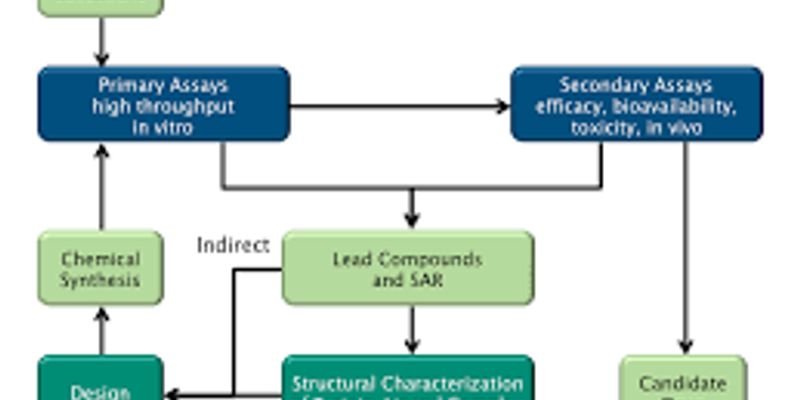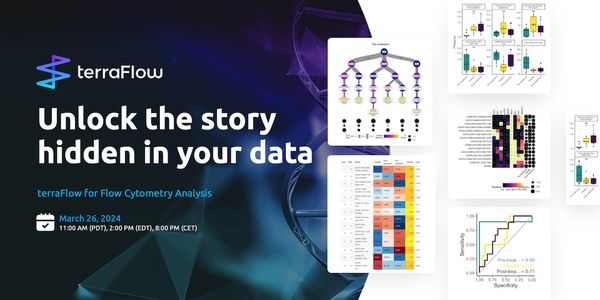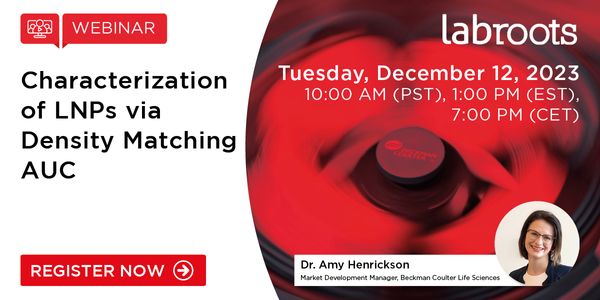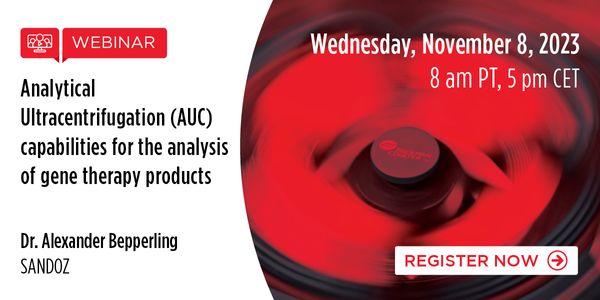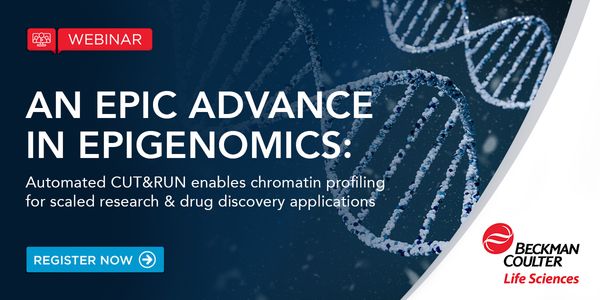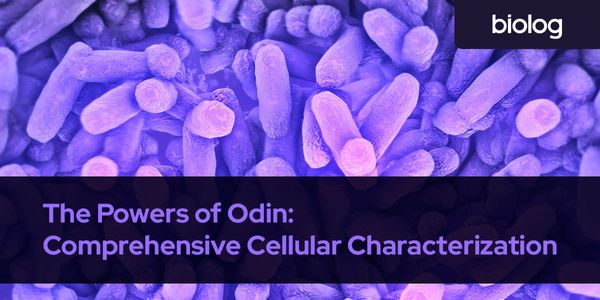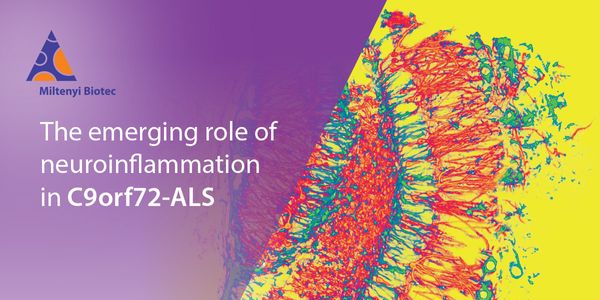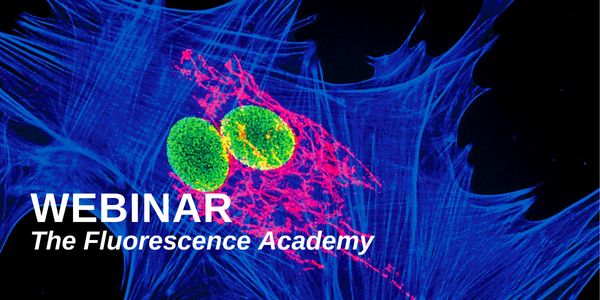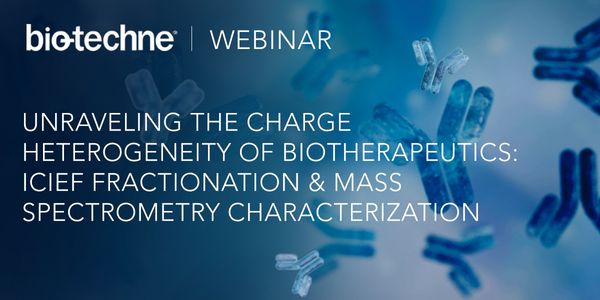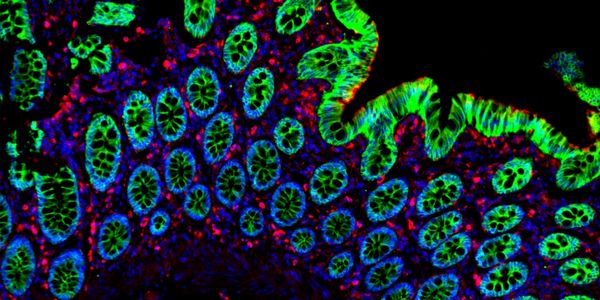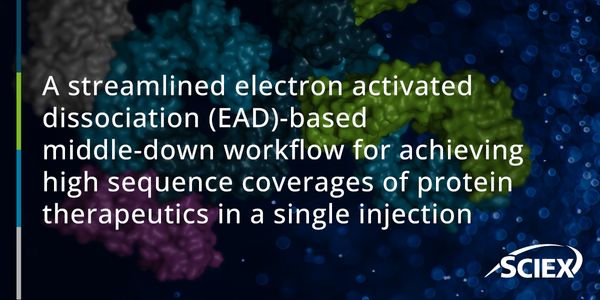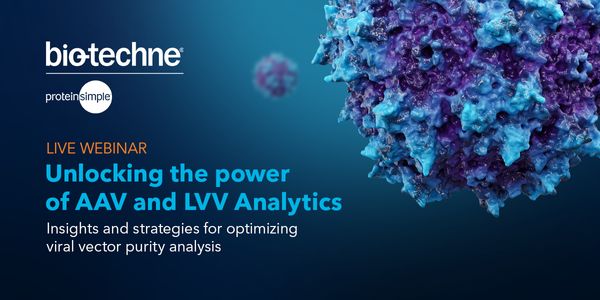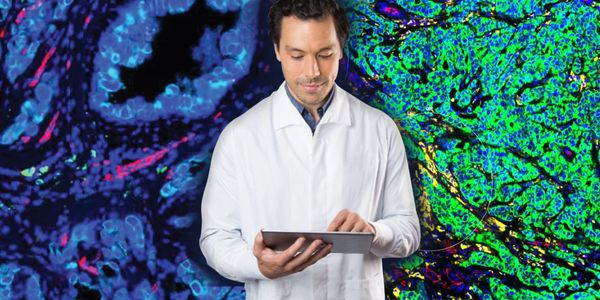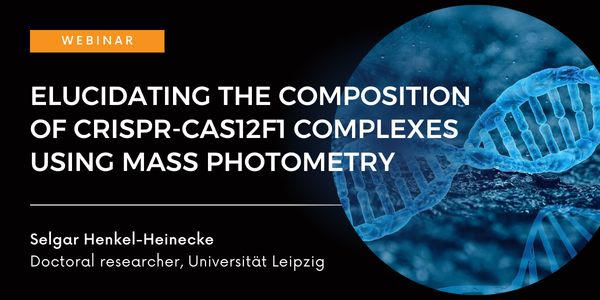Protein Characterization
Protein Characterization: involves the use of experimental methods that allow for the detection and isolation of a protein and its purification, as well as the characterization of its structure and function.
-
APR 02, 2024 | 8:00 AMCirculating tumor cells (CTCs) and circulating tumor DNA (ctDNA) have each gained attention as promising liquid biopsy markers, offering molecular insights into cancer progression, overall s...MAR 28, 2024 | 10:00 AMDigital SPR (dSPR) is a next-generation technology for characterizing biomolecular interactions. By combining digital microfluidics (DMF) with localized SPR (LSPR), digital SPR systems can e...MAR 26, 2024 | 11:00 AMEver wonder what you’re missing in your data? The sheer complexity of today’s flow and mass cytometry datasets demands automated solutions. Machine learning plugins only provide...DEC 12, 2023 | 10:00 AMDetermining the purity of LNPs loaded with nucleic acids can be challenging due to their size heterogeneity. Here, we present analytical ultracentrifugation (AUC) methods that use multiwavel...Most FDA-approved therapeutic drugs target transmembrane proteins, yet the development of monoclonal antibodies for multi-transmembrane protein targets has been limited. Despite the abundanc...
Spheroids and organoids, two examples of 3D cell culture models, have become invaluable tools to study the processes that dictate behavior of tissues under physiological and pathological con...
NOV 08, 2023 | 8:00 AM
AAVs and LNPs are complementary gene transfer systems with respect to immunogenicity, tissue tropism and types of nucleic acids, which can be delivered. AUC provides a wealth of orthogonal a...
OCT 24, 2023 | 10:00 AM
Dynamic changes in chromatin drive gene expression programs during cellular development and contribute to pathological changes underlying disease. To date, efforts to characterize chromatin...
SEP 26, 2023 | 8:00 AM
Join us for an educational webinar that delves into the fascinating world of Extracellular Vesicles (EVs) and their impact on biomedical research and medicine. In collaboration with ExoVecto...
Speaker:
Roland Leathers, PhD
, Jeroen de Vrij, PhD
Sponsored By: Thermo Fisher Scientific/Gibco
AUG 29, 2023 | 8:00 AM
Prokaryotic and eukaryotic cells change and adapt to their environments in ways that genomic characterization methods do not fully capture or predict. Even strains of the same species of mic...
AUG 23, 2023 | 10:00 AM
C9orf72 repeat expansions cause inherited amyotrophic lateral sclerosis/frontotemporal dementia (ALS/FTD) and result in both loss of C9orf72 protein expression and production of potentially...
AUG 01, 2023 | 10:00 PM
C.E. CREDITS
Stem cells have the capability to develop into any specialized cell type, which makes them a valuable resource in research and regenerative medicine. Differentiated stem cell models provide...
The use of adeno-associated viruses (AAV) as gene delivery vectors has vast potential for the treatment of many severe human diseases. A small group of intensively studied AAV capsids have b...
JUN 29, 2023 | 9:00 AM
Imaged isoelectric focusing (icIEF) has been established as the standard technique for profiling charge heterogeneity, which is a critical quality attribute (CQA) of biotherapeutics....
JUN 20, 2023 | 10:00 AM
C.E. CREDITS
Spatial biology enables researchers to characterize combined molecular information and spatial...
APR 13, 2023 | 8:00 AM
Date: April 13, 2023 Time: 8:00am (PDT), 11:00am (EDT), 5:00pm (CEST) It is important to confirm the sequences and post-translational modifications (PTMs) of protein therapeutics to ensure d...
APR 12, 2023 | 8:00 AM
Date: April 12, 2023 Time: 8:00am (PDT), 11:00am (EDT), 5:00pm (CEST) Recombinant adeno-associated viruses (AAVs), lentiviral vectors (LVV), and adenoviru...
MAR 30, 2023 | 8:00 AM
Date: March 30, 2023 Time: 8:00am (PST), 11:00am (EST), 5:00pm (CET) Join the Gibco Cell Culture Heroes webinar featuring Heather Beasley, PhD as she presents "SLC25A46 as a Novel Mitoc...
MAR 08, 2023 | 9:00 AM
Date: March 08, 2023 Time: 9:00am (PST), 12:00pm (EST), 6:00pm (CET) An unbiased characterization of the human microbiome is crucial to a more complete understanding of microbial effect on h...
Alzheimer’s and Parkinson’s diseases (AD, PD) are the two most common neurodegenerative disorders. Both diseases are characterized by abnormal aggregates in the brain, which incl...
Selective vulnerability of brain regions and specific neural populations in neurodegeneration remains little understood. We hypothesize that pre-existing physiological differences in neurons...
MAR 07, 2023 | 9:00 AM
Date: March 07, 2023 Time: 9:00am (PST), 12:00pm (EST), 6:00pm (CET) The ability to synthesize and sequence vast numbers of DNA constructs is a cornerstone of modern high-throughput biologic...
JAN 26, 2023 | 8:00 AM
Date: January 26, 2023 Time: 8:00am (PST), 11:00pm (EST), 5:00pm (CET) NanoString’s GeoMx® DSP allows for the characterization of spatial distribution and abundance of proteins and...
JAN 18, 2023 | 9:00 AM
Date: January 18, 2023 Time: 9:00am (PST), 12:00pm (EST), 6:00pm (CET) CRISPR-Cas systems are widely used in genome engineering applications. They contain RNA-guided ribonucleoprotein (RNP)...
APR 02, 2024 | 8:00 AM
Circulating tumor cells (CTCs) and circulating tumor DNA (ctDNA) have each gained attention as promising liquid biopsy markers, offering molecular insights into cancer progression, overall s...
MAR 28, 2024 | 10:00 AM
Digital SPR (dSPR) is a next-generation technology for characterizing biomolecular interactions. By combining digital microfluidics (DMF) with localized SPR (LSPR), digital SPR systems can e...
MAR 26, 2024 | 11:00 AM
Ever wonder what you’re missing in your data? The sheer complexity of today’s flow and mass cytometry datasets demands automated solutions. Machine learning plugins only provide...
DEC 12, 2023 | 10:00 AM
Determining the purity of LNPs loaded with nucleic acids can be challenging due to their size heterogeneity. Here, we present analytical ultracentrifugation (AUC) methods that use multiwavel...
Most FDA-approved therapeutic drugs target transmembrane proteins, yet the development of monoclonal antibodies for multi-transmembrane protein targets has been limited. Despite the abundanc...
Spheroids and organoids, two examples of 3D cell culture models, have become invaluable tools to study the processes that dictate behavior of tissues under physiological and pathological con...
NOV 08, 2023 | 8:00 AM
AAVs and LNPs are complementary gene transfer systems with respect to immunogenicity, tissue tropism and types of nucleic acids, which can be delivered. AUC provides a wealth of orthogonal a...
OCT 24, 2023 | 10:00 AM
Dynamic changes in chromatin drive gene expression programs during cellular development and contribute to pathological changes underlying disease. To date, efforts to characterize chromatin...
SEP 26, 2023 | 8:00 AM
Join us for an educational webinar that delves into the fascinating world of Extracellular Vesicles (EVs) and their impact on biomedical research and medicine. In collaboration with ExoVecto...
Speaker:
Roland Leathers, PhD
, Jeroen de Vrij, PhD
Sponsored By: Thermo Fisher Scientific/Gibco
AUG 29, 2023 | 8:00 AM
Prokaryotic and eukaryotic cells change and adapt to their environments in ways that genomic characterization methods do not fully capture or predict. Even strains of the same species of mic...
AUG 23, 2023 | 10:00 AM
C9orf72 repeat expansions cause inherited amyotrophic lateral sclerosis/frontotemporal dementia (ALS/FTD) and result in both loss of C9orf72 protein expression and production of potentially...
AUG 01, 2023 | 10:00 PM
C.E. CREDITS
Stem cells have the capability to develop into any specialized cell type, which makes them a valuable resource in research and regenerative medicine. Differentiated stem cell models provide...
The use of adeno-associated viruses (AAV) as gene delivery vectors has vast potential for the treatment of many severe human diseases. A small group of intensively studied AAV capsids have b...
JUN 29, 2023 | 9:00 AM
Imaged isoelectric focusing (icIEF) has been established as the standard technique for profiling charge heterogeneity, which is a critical quality attribute (CQA) of biotherapeutics....
JUN 20, 2023 | 10:00 AM
C.E. CREDITS
Spatial biology enables researchers to characterize combined molecular information and spatial...
APR 13, 2023 | 8:00 AM
Date: April 13, 2023 Time: 8:00am (PDT), 11:00am (EDT), 5:00pm (CEST) It is important to confirm the sequences and post-translational modifications (PTMs) of protein therapeutics to ensure d...
APR 12, 2023 | 8:00 AM
Date: April 12, 2023 Time: 8:00am (PDT), 11:00am (EDT), 5:00pm (CEST) Recombinant adeno-associated viruses (AAVs), lentiviral vectors (LVV), and adenoviru...
MAR 30, 2023 | 8:00 AM
Date: March 30, 2023 Time: 8:00am (PST), 11:00am (EST), 5:00pm (CET) Join the Gibco Cell Culture Heroes webinar featuring Heather Beasley, PhD as she presents "SLC25A46 as a Novel Mitoc...
MAR 08, 2023 | 9:00 AM
Date: March 08, 2023 Time: 9:00am (PST), 12:00pm (EST), 6:00pm (CET) An unbiased characterization of the human microbiome is crucial to a more complete understanding of microbial effect on h...
Alzheimer’s and Parkinson’s diseases (AD, PD) are the two most common neurodegenerative disorders. Both diseases are characterized by abnormal aggregates in the brain, which incl...
Selective vulnerability of brain regions and specific neural populations in neurodegeneration remains little understood. We hypothesize that pre-existing physiological differences in neurons...
